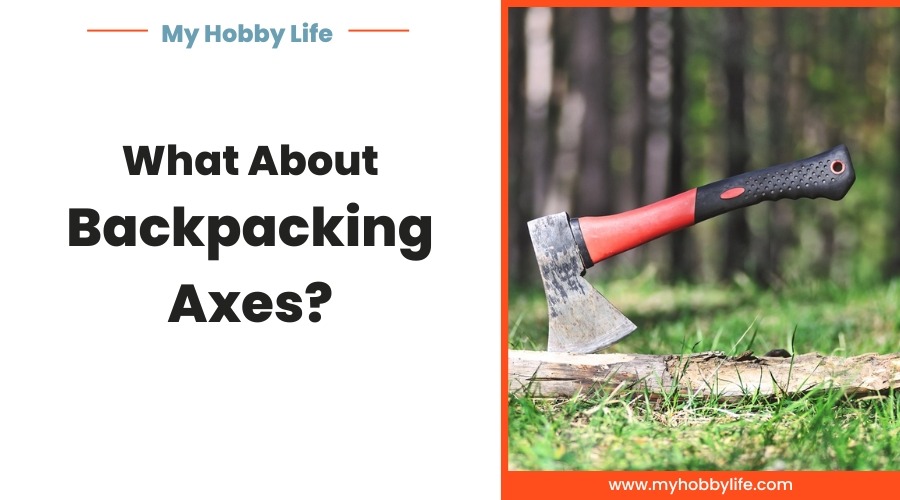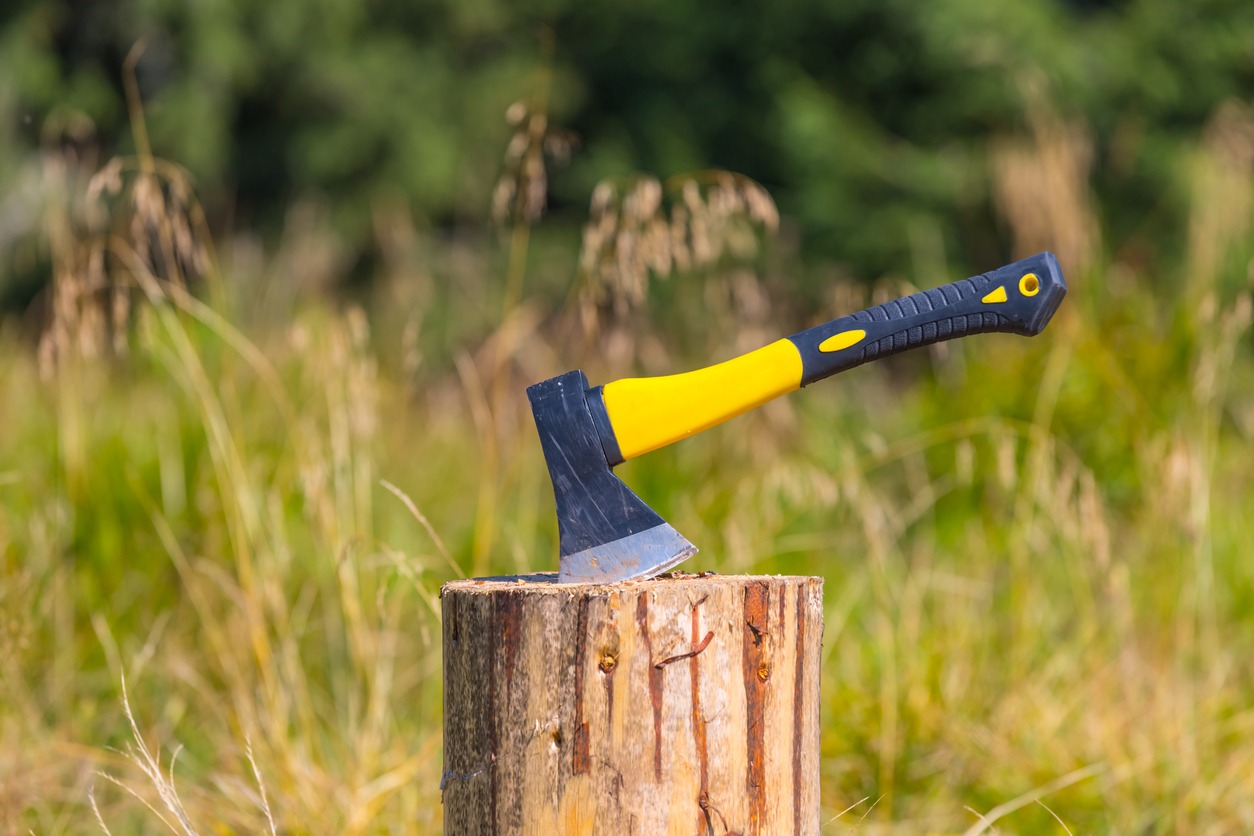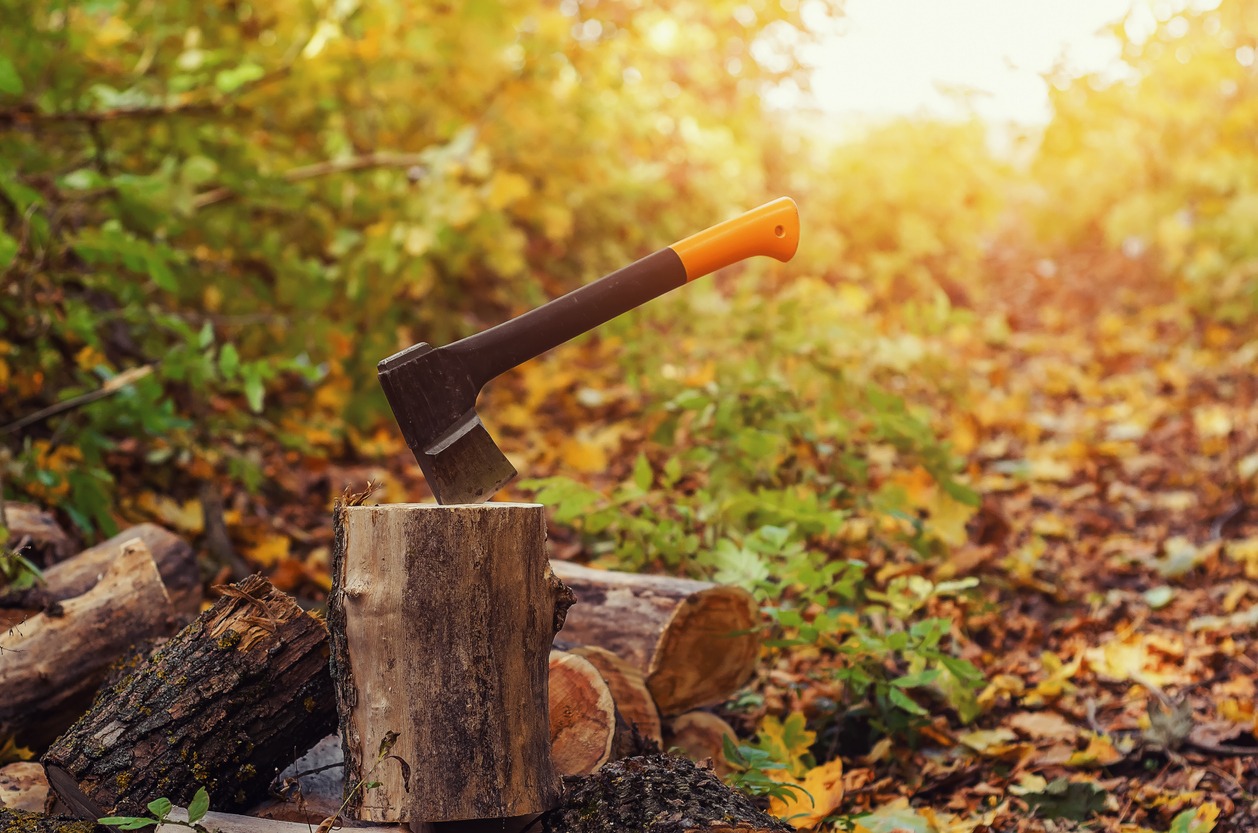There’s nothing like the fun and excitement of being in the great outdoors, relishing the fresh air, enjoying the beautiful sceneries, watching the fascinating wildlife, and sometimes going through some extremes that make the trip more thrilling.
While you already have a long list of essential items to have in your backpack, adding a backpacking axe is mightily handy for your safety and survival. It makes collecting wood easier and fun and can double up as a self-defense weapon, plus other different purposes, making them a must-bring to your travels.
When it comes to picking the best backpacking axe, however, you’ll find lots of options that make the decision-making process more difficult than attempting to chop down wood using a Swiss knife. But don’t fret! We’ve collated all the essential information you need to know about backpacking axes – helping you find the trusty one you need for your backpacking adventure.
Why Do You Need a Backpacking Axe?
If you’re planning to backpack in the wild woods, then you must seriously consider carrying a backpacking axe. Here are the reasons why:
- A backpacking axe is essential for building an emergency shelter. This tool is handy should you run into a situation where you need to create an emergency shelter. It will be quicker and easier to cut down tree limbs, strip bark, and gather all other necessary materials to build a sturdy shelter.
- A backpacking axe is also necessary for creating tinder. If you need to start a fire, you may just simply collect larger pieces of fallen wood, strip the outer layers, and split them to create tinder and make fire.
- A backpacking axe can double up as a hammer. The back end of your backpacking axe is designed to function as a hammer. You can easily utilize it as one, which will be a great help for tasks like driving in the center pole of a makeshift shelter or hammering in the tent pegs. Just ensure that the sheath is one so you won’t injure yourself with the exposed edge.
- A backpacking axe is handy for processing game or fish. While a hunting knife is great for preparing meat, a backpacking axe is ideal to use when handling larger meat portions and cutting them for easier consumption. Moreover, the curved edge of the backpacking axe is an excellent descaling tool and suits the contours of the fish, offering a quicker, cleaner finish than most hunting knives.
- A backpacking axe is useful for hikes. Whether it’s for clearing thick vegetation ahead of your way, trimming limbs, or building fire, this tool is a great addition to any hike.
- A backpacking axe is vital for self-defense. When in nature, you must do your best not to engage with larger, predatory animals. However, should you be in an emergency situation being under threat of attack from these wild animals, a backpacking axe is a more visible tool that can put off large predators.
What Factors to Consider For When Buying A Backpacking Axe
When purchasing a backpacking axe for your backpacking trips, there are several factors that you need to consider, which include:
1. Weight
One of the primary things that you need to take into account is weight. Given that you will be carrying the tool along with other essential things, you will want a lightweight backpacking axe that won’t weigh and slow you down and won’t take up the weight that you could allocate for other items.
Just note that the lighter the backpacking axe is, the more effort you need to put into the swing. Therefore, depending on the degree of usage you’re set on your trip, it’s best to opt for light to medium-weight axes for good efficiency. As you’re not likely going to fall trees, you can still opt for the lighter options, as most backpackers do.
2. Portability
While it may look cool for some to have an axe dangling out of their backpacks, not all are comfortable having it that way. Others prefer having everything inside their packs, which is also a whole lot safer and secure. With that, it’s best to have a compact, portable backpacking axe. You can even find foldable models, which may sacrifice some chopping power but will still suffice for most types of work you need to do on your backcountry travels.
3. Handle
Axe handles bear paramount importance. Like with using a hammer, some of the force vibrates onto the handle. If the handle is poorly designed, much of this force will resonate to your hand that’s holding the axe, rendering it uncomfortable to use and making your hand prone to injury.
Moreover, the material is also crucial. While most people prefer the feel of wooden handles, they can easily decay and break if affected by water. Composite and fiberglass handles are becoming popular. They are lightweight, very sturdy, absorb shock well, and won’t rot even if exposed to outside elements like water.
4. Axe Head
Another important consideration is the axe head. You want it to be made out of high-quality stainless steel or carbon steel. The former is excellent if you’re spending extended periods in wet weather. Stainless steel has chromium, which gives the metal resistance to oxidation or rust. Though you can still use carbon steel in wet weather, you just have to wipe it down with oil to give it protection. The extra effort will pay off as carbon steel is more durable and much stronger, allowing it to withstand heavier work and abuse.
5. Handle Length
You might be surprised but the length of the backpacking axe handle dictates for what purpose it is useful for. For instance, a backpacking axe with a longer handle is more suited for chopping wood as it permits greater swing speed. The catch is that it will eat up more space in your backpack.
On the other hand, a shorter shaft is great for shaping and chopping smaller pieces of wood as it is lighter and easier to carry. With that, you must carefully assess what tasks you would use your axe for and pick the handle length appropriate for that.
6. Hand Forging
Majority of the commercial axe manufacturers today use machinery to produce axes in bulk. Without machinery, the process involved in shaping the metal is incredibly grueling. Thus, making them relatively more expensive than ones that came straight off the production line. While mass-produced axes aren’t necessarily less sturdy, hand-forged axes are valued higher given all the time and effort devoted to creating them. Plus, they also often come with hand-carved handles. Many people also claim the quality of hand-forged axes is a whole lot better than their machine-produced counterparts.
7. Efficiency
A backpacking axe’s efficiency depends on three factors: weight, grip, and the blade and bit. First, the weight of the axe must be mainly on the head, as that allows greater power and better control. Second, the axe should have a good grip, usually from rubber, so it won’t slip when swinging and to avoid injuries. Lastly, the blade and the bit’s width are also important. If it’s too wide, it will be difficult to trim branches. If it’s too skinny, chances are the tool will just wedge and stay stuck in bigger chunks of wood.
8. Sharpness
The sharper the edge, the better as it will be easier to chop wood. A high-quality stainless steel or carbon steel axe head should be sharp out of the box and won’t dull quickly. Moreover, it must be evenly sharp on both sides. The best ones you’ll find are hammered and grinded to scrunch and sharpen the metal. If the sharpness isn’t equal, you’ll easily notice how it’s more difficult to use the axe for chopping.
9. Design
For a backpacking axe, it’s always a first to strive for functionality over form. Yet, it doesn’t mean that you should take the design for granted. Some aesthetic features can even provide benefits, so don’t miss picking an axe that makes you look good while swinging on those wood. For instance, an axe with a brightly-colored handle is easier to find in case you drop them in the forest. Cross-hatching isn’t only super cool but they also provide additional grip. Of course, super shiny blades are simply hard to resist.
10. Price
For backpacking axes, the price range can be around $20 to $100, but you get what you pay for. In general, items from $30-$40 are already good enough. You will find decent and durable backpacking axes in this price range. If you’re looking for an axe to simply chop wood for campfires, then those ones will already suffice.
However, if you want something that has more usefulness and versatility, and will last you a lifetime, expect that you need to shell out more money. After all, high-quality steel that doesn’t rust or chip and stays sharp comes with a hefty price tag. If you’re a bargain hunter and want great features for a cheaper price, just watch for deals or sales on the item you’re eyeing.
Quick Tips on Using Your Backpacking Axe
Once you’re able to successfully purchase a backpacking axe, there are important things you should refrain from doing to keep your tool in tip-top condition.
First, you should never overuse your axe. For instance, don’t continually use it for cutting or chopping wood. If there are simpler alternatives like wedging sticks or branches between two trees to break them, then do it. Using your axe only when it’s truly necessary will keep it sharp longer and help you save up on your own energy as well.
If you opt for a darker-colored axe, make sure that you put it down in a place where you could easily see it. A common mistake by backpackers is randomly placing their tool beside them not aware of the thick bush or foliage. Once they look back, they can no longer find their axe. To avoid that, you can simply tie a string of vibrant color or paint a streak of bright color to your axe to make it quicker to find.
Before swinging, make sure that your footing is stable. Take a look at your surroundings and see to it that no one is in danger of getting hit. Always watch your hands and fingers. Be also careful of over-swinging or deflection, which may lead the blade to hit your leg or foot. Lastly, always put the sheath back when you’re not using the axe.
Takeaway
When you’re an occasional or passionate backpacker, a backpacking axe must be on your outdoor tool list. It’s extremely handy and won’t let you down as you venture into the wilderness or woods. Happy axing, happy backpacking!


